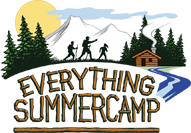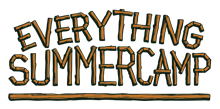Hey, Runners!
A fantastic activity that plenty are very passionate about, Track (also known as Cross Country or…Running) is a competitive sport that’s based in mimicry of predators in high-speed pursuit of their prey. It wasn't called Track or Cross Country to start. it went by 'Hare and Hound'. It originated during the 1800s in England with at least one runner taking the role of the Hare and getting a head start, and another runner or more acting as the Hound and chasing after the prey.


Alterations of the game involved the initial runner dropping pieces of paper or other markers on a random course and the hunter would have to TRACK the prey. This came to be known as ‘The Paper Chase’. Nobody really knows who invented these games. They just got started among kids of a neighborhood who were building upon the most basic of childhood games: Tag.
Public schools started holding events of these games, the first one being Rugby School in 1837. They called it the Crick Run. Soon enough Oxford and Cambridge Universities joined in on the fun and the popularity soared. Within four decades, England had officialized their National Cross-Country Championship in which the game became a long distance race along a course that was laid out in advance.
While we owe the invention of ‘Hare and Hound’ as well as ‘The Paper Chase’ to kid’s games, the United States owes its interest in Track to one New Yorker named William C. Vosburgh. It was William who got wind of this English Sport. He took a great interest in it and introduced it to schoolboards of his local community.
The same as England, it didn’t take long for the popularity of Track to rise here in the states—plus it was starting out as in a much more official capacity than its beginnings overseas. In 1887, just ten years’ time, the National Cross-Country Association was founded in the United States and the first championship event was held.
It wasn’t long before Cross-Country Running was offered at Harvard in the Fall Semester as a training event for Track and Field Distance Runners. Plenty of other colleges followed Harvard’s example. City College of New York, Cornell University, and the University of Pennsylvania were the initial three to take part in the first intercollegiate meet in 1890.
Let Mr. Vosburgh teach us all a lesson about speaking up when we see something we like. Chances are other folks will like it too! Enjoy learning the ins and outs of Track this summer and, as always, thanks for reading!
- John



 facemask that players wear. And Fencing swords come to a blunt end without being sharp in the least. The only injuries that happen are ones that would with any other sport.
facemask that players wear. And Fencing swords come to a blunt end without being sharp in the least. The only injuries that happen are ones that would with any other sport.
 Here he developed his own education system that worked on his three levels: physical training, morality, and fortitude. He called his program the ‘Natural Method’ but it has also come to be known as ‘Hébertism’. In fact, many European and French Canadian Ropes Courses are commonly referred to as Hébertism Courses.
Here he developed his own education system that worked on his three levels: physical training, morality, and fortitude. He called his program the ‘Natural Method’ but it has also come to be known as ‘Hébertism’. In fact, many European and French Canadian Ropes Courses are commonly referred to as Hébertism Courses.